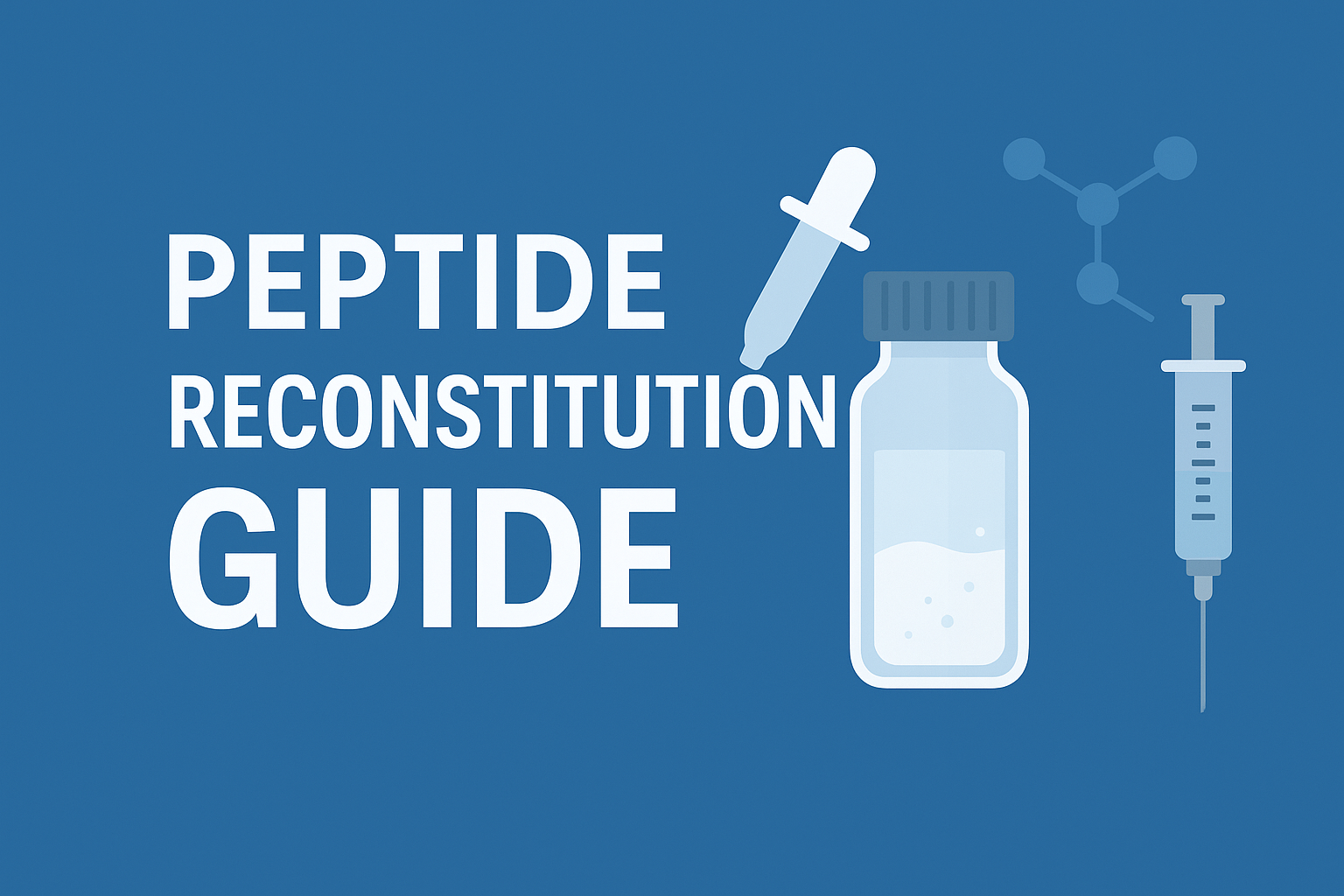
Step-by-Step Guide: How to Safely Reconstitute Peptides
Introduction
Peptide research is growing rapidly, but one of the most important first steps is knowing how to properly reconstitute peptides. Whether you’re working with research peptides like Retatrutide or others, sterile handling and correct preparation are essential for accurate results. In this guide, we’ll walk you through the basics of peptide reconstitution and share a trusted resource for further learning.
What Does Reconstitution Mean?
Reconstitution is the process of adding a liquid (usually sterile or bacteriostatic water) to a lyophilized (freeze-dried) peptide. This restores the peptide to a usable liquid form for research purposes.
Why it matters:
- Ensures peptide stability.
- Prevents contamination.
- Allows for accurate dosing in research applications.
Step-by-Step Peptide Reconstitution
Follow these steps to reconstitute peptides safely:
Prepare your materials:
- Lyophilized peptide vial
- Sterile or bacteriostatic water
- Syringe and needle
- Alcohol swabs
Sanitize your workspace:
- Wipe down surfaces.
- Wash and sanitize your hands.
Add diluent slowly:
- Insert the syringe needle into the vial.
- Direct the liquid down the side of the vial wall.
- Avoid spraying directly onto the powder to prevent foaming.
Mix gently:
- Do not shake the vial.
- Swirl slowly until fully dissolved.
Storage and Handling Tips
- Store reconstituted peptides in the refrigerator (2–8°C).
- Always use a new, sterile needle when drawing from the vial.
- Follow stability guidelines—some peptides remain stable for weeks, while others require use within days.
Further Learning
If you’re looking for peptide-specific instructions, check out this detailed guide:
👉 How to Reconstitute Retatrutide
Conclusion
Reconstituting peptides is a simple process once you understand the basics. By following sterile techniques, proper storage, and step-by-step preparation, you can ensure the reliability of your peptide research.

